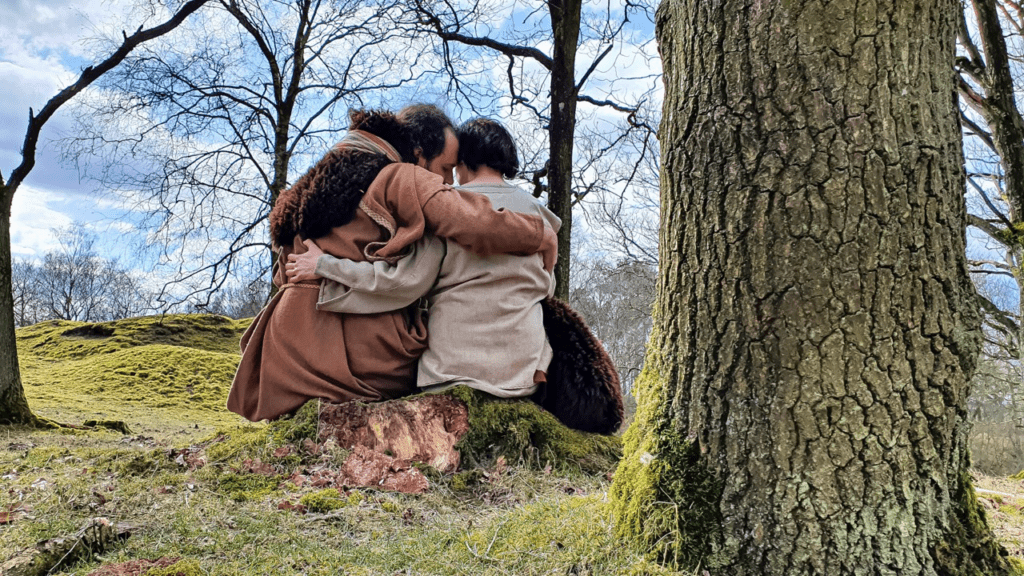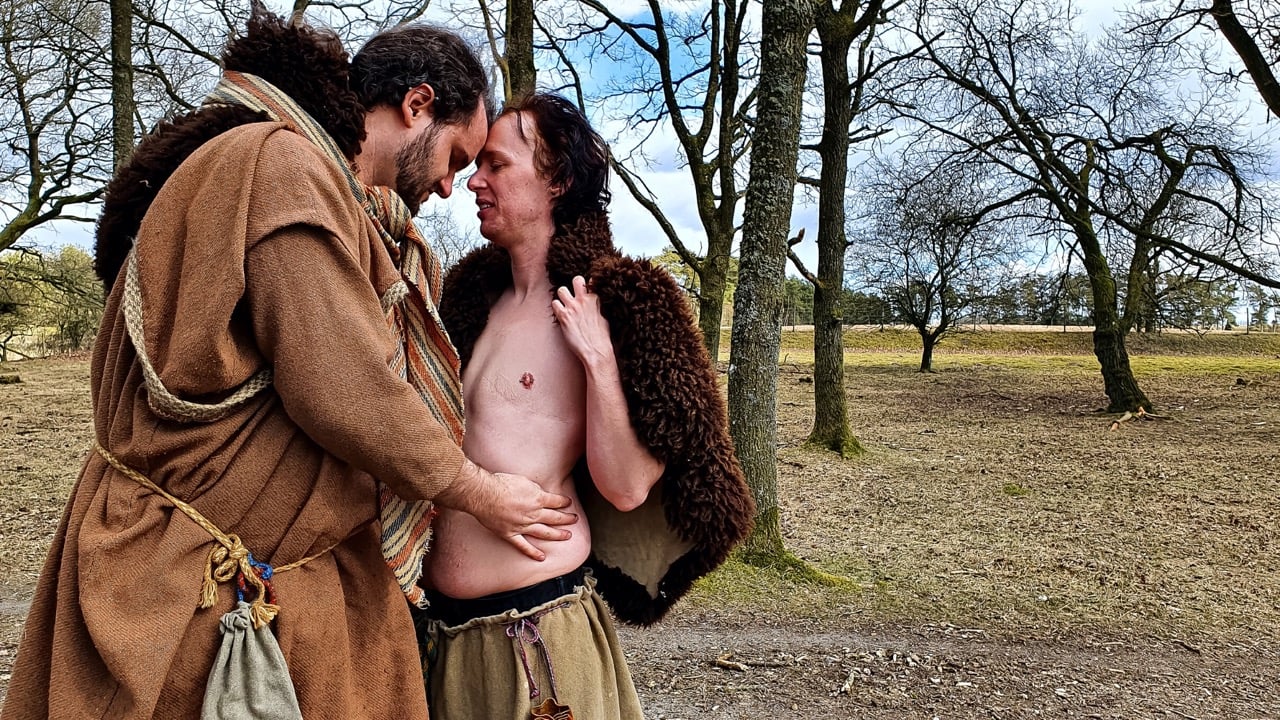
Bi-frost and Vi-queens
By Mie Hald
All photography by Sofuz Stenklopp
Ulf steps out in the early morning and shivers. It’s cold, and he would rather go back to Halfdan, lying warm and safe under the blankets. But Estrid is waiting at home, and he can no longer stay with his beloved.
Such a situation may well have taken place somewhere in the Nordic countries a little over a thousand years ago. In Viking times, attraction to other genders than the opposite was not something one was ashamed of or found criminal.
When I found out that Christianity contributed to much of the adversity that LGBTI+ people have faced in recent centuries, a world of opportunity opened up. Christianity has not been an eternal constant in the Nordic countries; there has been something before: “Asetro” (Norse Mythology).
I don’t pretend to be an expert in religion or to understand Old Norse languages, culture, or religion. But it is part of my heritage and culture, and therefore I have set out to gain knowledge of how everything worked in the Nordic countries a few thousand years ago.
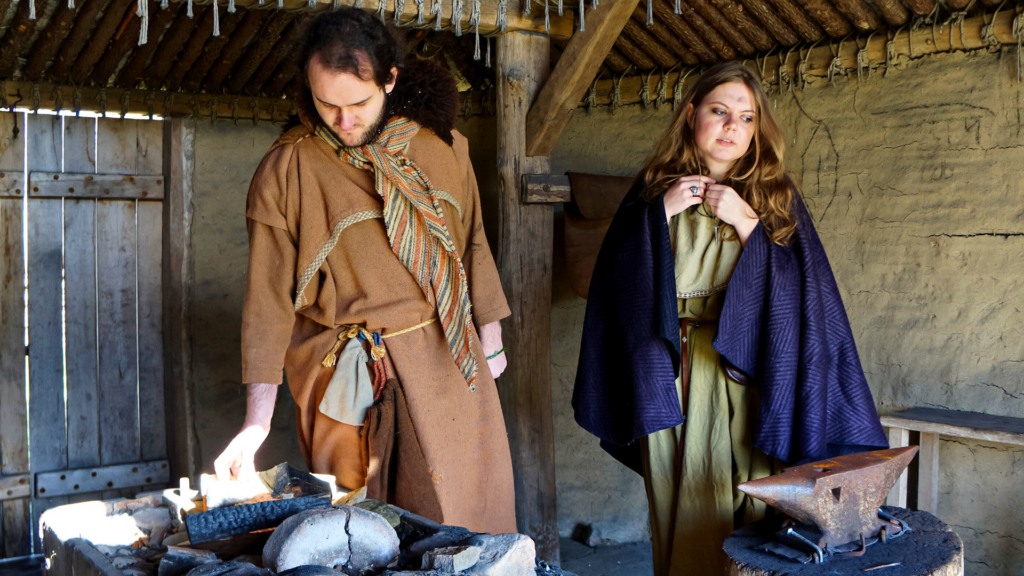
Roles and expectations
There were expectations in the Viking Age, as there are in so many other societies. Life was not always easy, and everyone had to contribute with whatever they could; this also applied to reproduction. So Ulf married Estrid and sees Halfdan when he can. He does his duty, and Estrid is busy helping with the rituals and advising the youth in the area.
They live on a farm. Ulf can no longer go on expeditions, and he has plenty to look after with his crops and animals. He’s been tied to his hometown since his last leg injury, but it does not matter to him now – if it were not for the fact that Halfdan is still leaving.
To assume that Viking relationships between two people of the same sex have been purely physical would be a hollow view of how human relations work. Of course, today some people partner up solely to meet each other’s physical needs, but why should we assume that everyone did that a little over a thousand years ago?
Love and intimacy in different shapes and sizes typically go hand in hand, even though this is not always how it works. But why not assume that Ulf is a decent Viking who can fulfill both his duty to his community and his wife while being true to his heart and the man he loves?
Apparently, not many people like “the soft Viking”. The Vikings must be tough! They must kill! They have to rape! Loot!
But… Why can they not be ordinary people?
Without pretending to be an expert in the field, I dare say that there have been several unmarried couples who have loved each other as only husband and wife were expected to do. But even though Ulf and Halfdan probably cared about each other, society, as in ancient Greece, had certain roles that were better to have than others.
In an article from 11 August 2015 on Historienet.dk Emrah Sütcü writes: ”The active participant did not face any noticeable condemnation. But the passive party was often mocked because a man who submits to another man was not a real man, it was believed.” Sütcü goes on to tell how Icelandic bodies of law stated that if a Viking was accused of being passive in a relationship, he could challenge his accuser to duel.
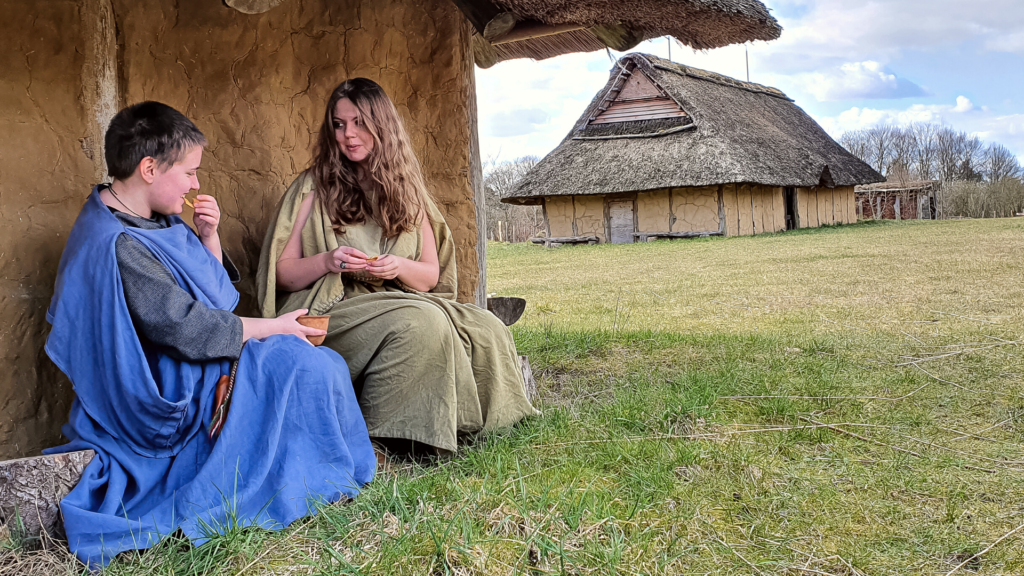
The understanding of women and the “role of women”
Through a myriad of cultures, women have been given a low-ranking role, especially when it comes to sexuality and lust. But once again, I choose to wear historical glasses. Because I have a hard time believing that a culture like the one the Vikings had would have so much contempt for women that the above example was an extreme case.
I do not doubt that the body of law that Sütcü refers to has been true – but has it been one of those that most people have snorted at? Like the old (and possibly not entirely true) law that in Denmark you can hit a Swede with a stick if they cross the frozen Sound?
I remember once hearing a religious scholar say, “Even the thunder God Thor understands that when he’s home on the farm, it’s Sif who makes the decisions.” And when you grow up with stories about mighty Valkyries who take fallen warriors to Asgard, it is hard to imagine that the women of the Viking Age have been passive.
Time rewrites history, and I have no difficulty imagining that there may have been a certain agenda when Christianity took over in the Nordic countries and wanted the Vikings to align themselves with the new values. Modern roles and expectations must not be imposed on history or archaeological finds, but that is exactly what we are slowly beginning to discover has happened.
For who was it that assumed that a Viking tomb belonged to a man, just because there lay a sword? Archaeologist and museum director Jeanette Varberg (she/her) has appeared in the DR series “Historien om Danmark” (The History of Denmark), and she has published the book “Viking – Robbery, fire and sword”. On Illvid.dk, she says that a grave from Birka, which is located a little outside Stockholm, is filled with horses and weapons – and it belongs to a woman. In Roskilde in Denmark, a Viking woman has been found buried with not just a spear, but also a hanged man who may have been her companion (or “entertainment”) for the afterlife.
Women in the Viking Age had more rights than in long periods of Christianity. If Ulf’s relationship with Halfdan ruins the marriage, Estrid is free to choose divorce. The same applies if he becomes violent towards her – however, she can receive severe punishment if she, like Ulf, chooses to find another partner.
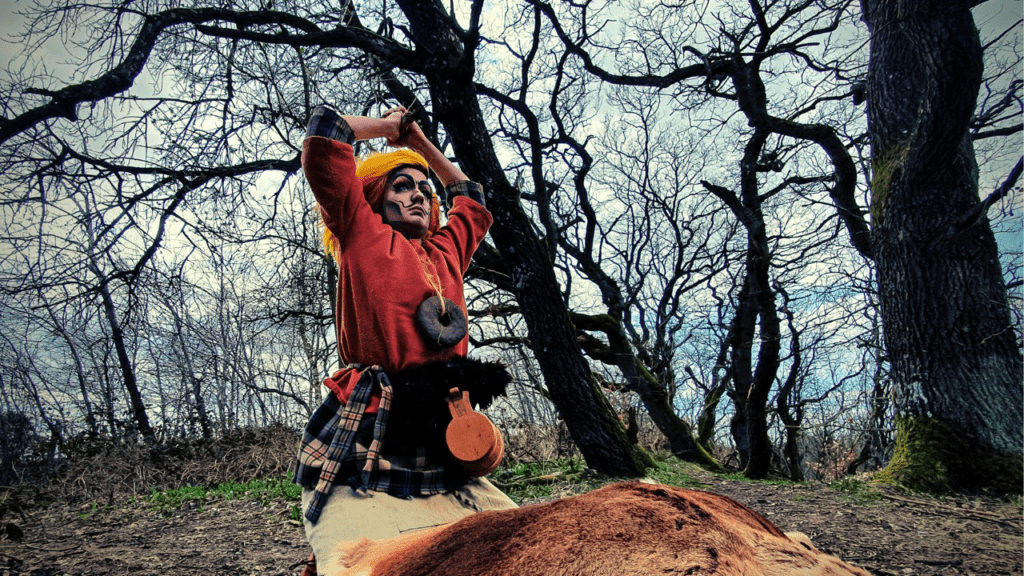
The religious context
There is also a religious aspect, which for me does not fit into the narrative that especially homosexuality in the Viking Age should be considered a bad thing.
Here, I turn to the textbooks. In Religion: Tidsskrift for Religionslærerforeningen for Gymnasiet og HF (Danish teacher’s education book – Magazine for the Religion Teacher’s Union of Gymnasium and HF) from 2016, Sophie Bønding (she/her) writes in the section “Loke – cow milker or milking cow ?” about two examples that can support my distrust.
A huge part of cultural perception comes from the belief system dominating society. One of the most famous figures from Norse mythology is Loke, both an ally and enemy of the Gods, and a mystery to many modern religious scholars.
In The Poetic Edda, which is the largest collection of stories from Norse mythology, stanza 23, Lokasenna (Loke’s Argument) gives some interesting claims about Loke. The mischievous God has insulted the Asgardians, and Odin has enough and answers back.
There are two translations of what Odin says. The first is from Thøger Larsen in 1926:
“Gave I them often, I shouldn’t,
the lazy in Battle, Victory –
You were eight years beneath the ground,
Milking cows and being wife
And there you have carried children,
That seems to me lackluster manhood”
The other from 1943 by Martin Larsen writes:
“Know then, if I gave
them, who were the gift unworthy,
The lazy, Victory,
eight winters
You were in the earth deep
Calving cow and woman
And they both birthed children,
and that seems to me aggravating behavior!”
The two differences in the translations are due to a cumbersome grammatical inflection, which can either result in Loke being referred to as a cow-milker or a dairy cow. Cow-milking is a woman’s job and is therefore considered degrading. However, if it is a dairy cow in question, the stanza refers very directly to the fact that Loke has been female.
And that would not be the first time.
Most people who know just a little about Norse mythology are aware that it was Loke who gave birth to Odin’s horse, Sleipner. In Gylfaginning 42 (The Myth of the Builder) it says: “that evening […] a mare ran out of a forest and to the horse Svadilfari … [And] Loke had had it like that with Svadilfæri, that he later gave birth to a foal.”
In Norse mythology, Loke is not only a shapeshifter, but he also changes gender several times. In Thrymskvithg (Thor’s Bridal Quest) he also plays the role of a woman a lot better than Thor, which has led many to regard him as sexually fluid and some form of multisexual, e.g. bisexual or pansexual.
But modern labels can not always be put on historical or mythological figures, and no one knows for sure whether Odin’s words were meant to be scornful or degrading.
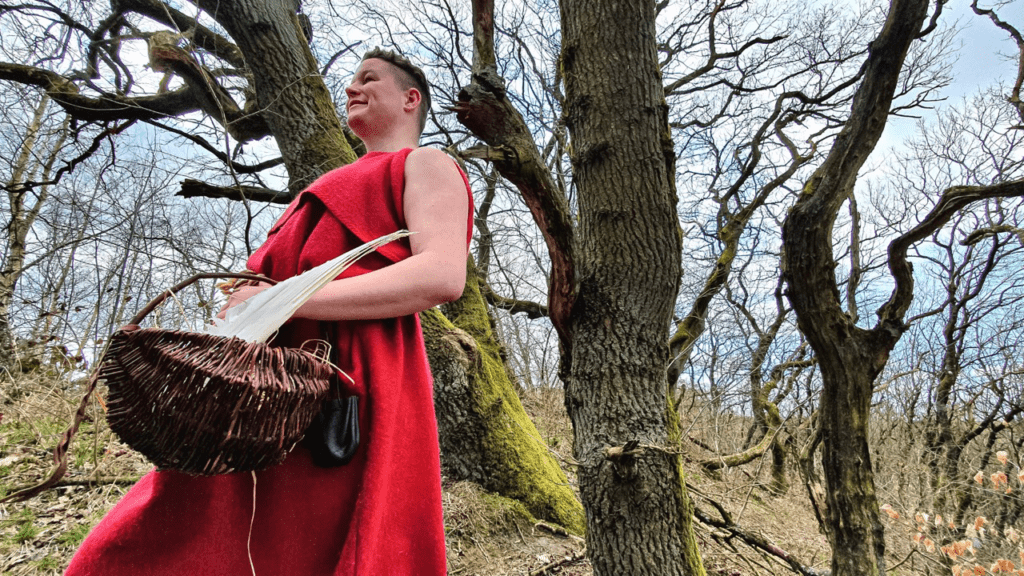
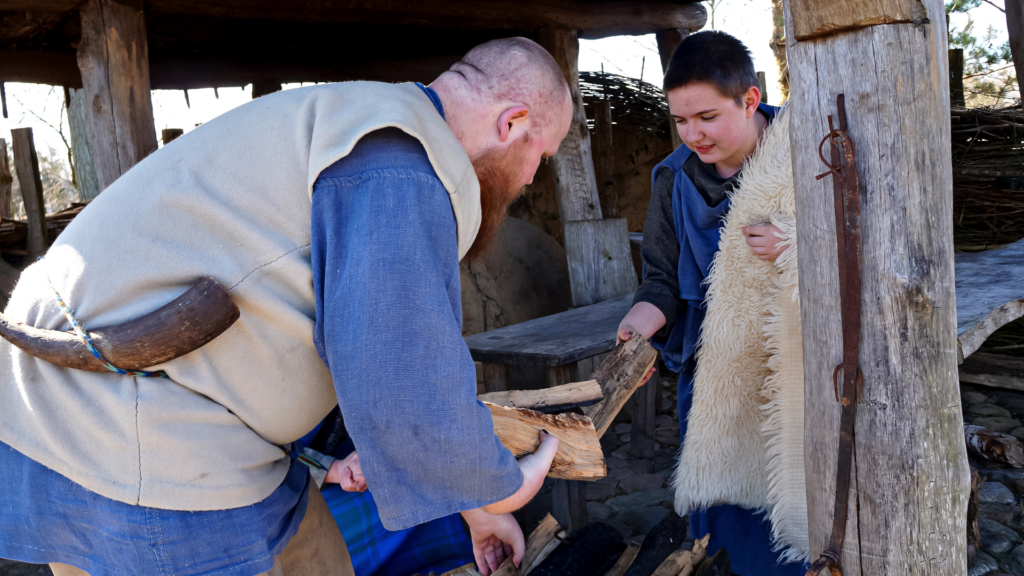
The feminine God-king
It was therefore my great surprise to find out that Odin himself did not have anything to blame Loke for. For Loke follows up Odin’s accusation with this: “But they said of you that you sailed on Samsø, and threw yourself into sorcery as a Seeress, in the form of a sorcerer you went among men, I think that is female behavior.”
One thing is Loke, the sneaky half-giant, who with his pregnancy and regular female disguises in the myths is considered anything but what we would today call heteronormative. But Odin? The King of the Gods and their wise chief?
Nothing is completely black or white, and Odin’s contrast to Loke was a welcome discovery as I searched through sources and texts for this article. Some of what Odin represented was the mere concept of masculinity – but at the same time, he was a master of sewing, something that was considered so feminine and immodest that it could also be called ‘ergi‘ (insult for something very immodest, including the passive party in a homosexual relationship).
Ph.D. Brit Solli (she/her) from Olso University goes in-depth with just this, Odin, Queerness and Vikings, in her book Seid: Myter, sjamanisme og kjønn i vikingenes tid (Seid: Myths, shamanism, and gender in the age of Vikings), and it is her text, Queering the Cosmology of the Vikings: A Queer Analysis of the Cult of Odin and “Holy White Stones”, which in part has helped me gain a greater understanding of the queerness of the Viking Age.
People are nuanced
If both the wise King of the Gods, Odin, and their two-tongued ally and enemy, Loke, can both be considered what we would today call Queer, why should others not? Things are lost over time, and as Nordic religion was oral, there are virtually no written sources. Rune writing is not informative when it comes to religion and was also more used for practical information. Therefore, many texts have been written down a few hundred years after Christianity took over, and the historical context must be weighed in.
Who can say that nothing has been removed? Although cultural heritage has been important in contemporary times in the Nordic countries, and the then-Christian residents have wanted to honor the practice of their ancestors, stories and narratives can easily have been rewritten or mistranslated with full intent.
There is always an agenda, and it would be naïve to think that it is always innocent. But modern and honest research point more and more to a Viking age where Ulf and Halfdan have loved each other, and where Estrid may have had more opportunity than many may have thought.
Norse mythology and Viking society are huge subjects. There is still a lot we in the modern world do not know, and even more that I as an individual do not understand or know about. But one thing is for sure: I do not doubt that the Vikings lived a life of queerness as part of society. Maybe not dominant, but possibly normalized and, yes, relatively innocent.
The rainbow may have played a role in more than one way in Norse mythology. The Vikings were nuanced people, just as we are today – and fortunately, there is much more to them than axes and expeditions.
INFO
The photoshoot for this article was coordinated by Mie Hald and features Kari Pedersen, Emilie Lind Damkjær (Faux Moe), Sørine Amanda Nielsen, Martin Boe, Kate Friborg Due, Leah E. V. Due and Christian van Elzelingen.
The photographer Sofuz Stenklopp can be found on Instagram @stenklopp_art_photography and on Facebook.com/StenkloppPhotography.
A big thank you to Viborg Museum and Hvolris Jernalderlandsby.
